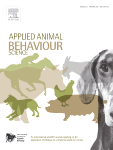Document type : article on Pig333 website
Author: Bjarne K. Pedersen
Preview: In recent years, many parameters in the design and construction of housing have changed. [...] Here are some of the main changes that affect the design of pig farming facilities.
Animal welfare
From 2003 to 2013, the European legislation on the housing of pregnant sows resulted in intensive efforts to develop new housing methods [...] Several European countries have taken this further than is required by the general EU regulations. In some northern European countries, for example, sows must be kept free-range or in groups throughout the period between weaning and a sow's next farrowing, with only a few days of confinement permitted. What is more, Germany already requires sows to be free-range during lactation in the new facilities, while new farms in several countries are already incorporating this system. Last year, the EFSA (European Food Safety Authority) expert group on animal health and welfare published a report on the welfare of pigs on EU farms, in which it suggested that sows should be kept free-range in future. If the European Commission follows these recommendations, we can expect many changes in future legislation on the housing and management of pigs.
Group housing for service/insemination
Increasing the duration of group housing for sows to include the whole period from weaning to farrowing has important implications for the design of facilities and, as always, it is essential to ensure that biological needs are met:
- Monitor individual feed intake, as this will determine litter size and body condition.
- Prevent aggression between sows as much as possible, to reduce the risk of abortion and fetal loss. [...]
- Design pens according to herd size and, if possible, separate gilts from other sows.
Lactating sows in free-range farrowing pens
Numerous studies have been carried out on lactating sows in free-range farrowing pens, but these studies have produced no consensus on design specifications. In Germany, legislators have imposed various requirements that now shape the design of facilities in other countries too, such as Denmark and the Netherlands, who export millions of pigs to German fattening farms. Meanwhile, the German regulations are constantly evolving, and their final form remains to be determined [...] A further constraint lies in environmental requirements for the reduction of methane and ammonia emissions. Since free-range farrowing pens are larger, so is the dunging area compared with that for conventional farrowing pens. For this reason, Danish researchers have investigated methods to include partially slatted floors and different slurry pit types to reduce gas emissions. Given that nest-building materials must also be supplied, scraper systems are becoming popular again, as they considerably reduce emission rates (up to 90%) and manage excess straw.
Prolific genetic lines
From the late 1990s, the Danish association of pig genetics producers began to focus on increasing litter sizes, and other genetics companies have followed suit. Total births and live births in pigs have increased enormously since that time, and the birth of 18-20 living piglets has now become the norm among the most prolific Danish lines, while others still stand at 12-13 live births. These changes must be taken into account in breeding strategies. If the objective is to produce a certain number of pigs, then it must be borne in mind that, given that prolific lines produce more than 10 additional weaners per sow per year compared with less prolific lines, some 30% fewer sows will be needed and the dams' feed requirements will be comparatively lower. If the objective is to keep a specific number of sows, then the farrowing, weaning and fattening facilities must be designed to accommodate anticipated production numbers. In terms of sow units alone, when designing for highly prolific genetics, up to 20% more farrowing pens are needed than for a single batch of pigs. As sows can generally rear only up to 14 piglets, any piglets in excess of that number have to be fostered with nurse sows brought in from a farrowing area where they have themselves farrowed a week earlier. In addition, space is needed for the piglets that have just been weaned from the nurse sows. Thus, on a farm where there are only non-weaning sows, a transition area needs to be included for these piglets. Usually, three zones are needed, and the design must provide a warm, comfortable environment, as the piglets of nurse sows are generally very young and small. Consequently, managing highly prolific genetics also requires highly qualified personnel, who must be considered as part of the overall breeding strategy.






